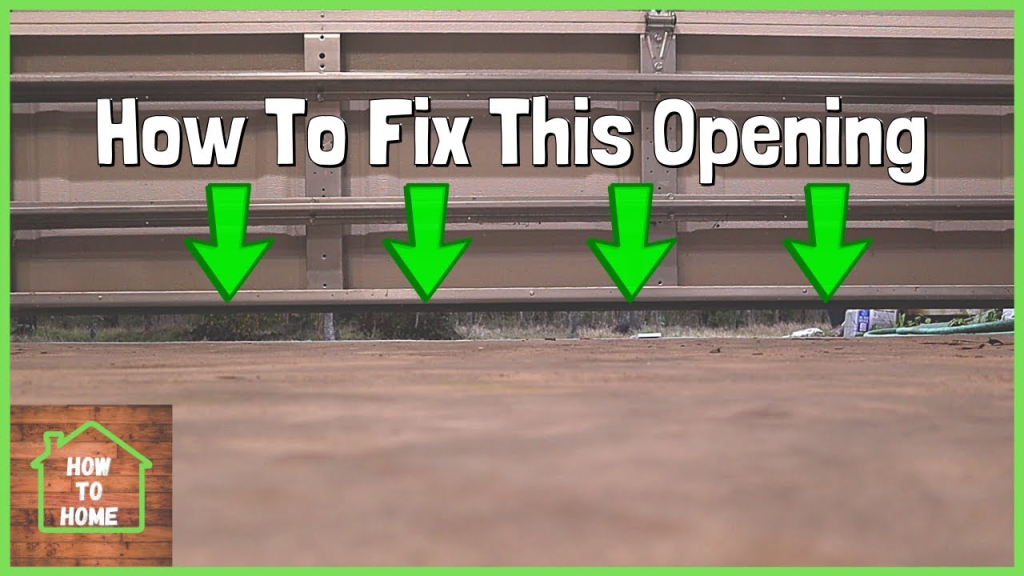If your Craftsman garage door opener is giving you trouble with 10 blinks and no lights on the sensors, you’re not alone. This issue can be frustrating, but understanding the cause and how to fix it can save you time, money, and stress. In this guide, we’ll explain what the 10 blinks signify, why the sensor lights may not be on, and the steps you can take to resolve the problem.

What Does 10 Blinks on a Craftsman Garage Door Opener Mean?
The 10 blinks on a Craftsman garage door opener are part of the diagnostic system designed to help you identify specific issues. In most cases, this blinking pattern indicates a safety sensor problem. The safety sensors are critical components that prevent the door from closing if something is in its path, ensuring safety for people, pets, and belongings.
Possible Causes for 10 Blinks and No Lights on Sensors
1. Power Supply Issues
The most common reason for the sensors not lighting up is a lack of power. The sensors require a continuous power supply to function correctly.
2. Misaligned Sensors
If the sensors are misaligned, they cannot communicate with each other, resulting in the door not closing and the opener displaying the 10 blinks error code.
Read too: Craftsman Garage Door Keypad Not Working? Here’s How to Troubleshoot and Fix It
3. Damaged or Disconnected Wires
Faulty wiring can disrupt the power flow to the sensors, causing the lights to remain off.
4. Obstructed Sensor Path
Dirt, debris, or objects blocking the sensors’ line of sight can lead to a malfunction.
5. Faulty Sensors
Over time, the sensors themselves may wear out or become damaged, leading to issues like no lights or 10 blinks.
How to Troubleshoot 10 Blinks Craftsman Garage Door Opener No Lights On Sensors
Step 1: Check the Power Supply
- Ensure that the garage door opener is plugged into a functioning outlet.
- Inspect the circuit breaker or fuse box for any tripped breakers or blown fuses.
- If the sensors still don’t light up, test the outlet by plugging in another device to verify it has power.
Step 2: Inspect Sensor Alignment
- Locate the sensors on either side of the garage door near the floor.
- Verify that both sensors are facing each other and are at the same height.
- Adjust the sensors if they appear misaligned. When aligned correctly, the sensor lights should turn on.
Step 3: Clean the Sensors
- Use a soft, damp cloth to wipe away dirt, dust, or debris from the sensor lenses.
- Ensure there are no obstructions, such as spider webs or leaves, blocking the sensor path.
Step 4: Check the Wiring
- Inspect the wires connected to the sensors and the opener. Look for signs of damage, such as fraying or cuts.
- Ensure all connections are secure and not loose.
- Replace any damaged wires to restore power to the sensors.
Step 5: Test the Sensors
- Manually press the garage door opener button while monitoring the sensors.
- If the lights remain off, try swapping the sensors to determine if one is faulty.
Step 6: Reset the Garage Door Opener
- Disconnect the opener from the power source for 1-2 minutes.
- Plug it back in and test the system. Resetting the opener can sometimes resolve minor glitches.
When to Call a Professional
If you’ve followed all the troubleshooting steps and the 10 blinks Craftsman garage door opener no lights on sensors issue persists, it’s time to call a professional. A garage door technician can:
- Test the sensors and wiring with specialized tools.
- Replace damaged or malfunctioning components.
- Ensure the opener is operating safely and efficiently.
Preventing Future Issues with Craftsman Garage Door Sensors
1. Regular Maintenance
- Clean the sensors periodically to prevent dirt buildup.
- Check for loose connections or signs of wear and tear.
2. Protect the Sensors
- Avoid hitting the sensors with tools or equipment.
- Ensure they are securely mounted to prevent misalignment.
3. Test the System Regularly
- Open and close the garage door a few times each month to ensure everything is functioning properly.
4. Upgrade to Modern Sensors
- Consider upgrading to more durable or advanced sensors if your current ones are prone to issues.
Common Questions About Craftsman Garage Door Opener Issues
1. What if only one sensor light is on?
If one sensor light is on and the other is off, the sensors are likely misaligned or there is a wiring issue with the sensor that is off.
2. Can I bypass the safety sensors?
While it’s technically possible to bypass the sensors, it’s not recommended as it compromises the safety features of your garage door opener.
3. How do I know if the sensors are bad?
Faulty sensors may exhibit symptoms such as no lights, inconsistent operation, or frequent error codes. A professional inspection can confirm whether replacement is needed.
Conclusion
A 10 blinks Craftsman garage door opener no lights on sensors issue may seem daunting, but with proper troubleshooting, it can often be resolved without professional assistance. Start by checking the power supply, aligning the sensors, and inspecting the wiring. Regular maintenance and timely repairs can help prevent similar problems in the future.
If all else fails, don’t hesitate to seek help from a professional technician to ensure your garage door opener operates safely and efficiently.























